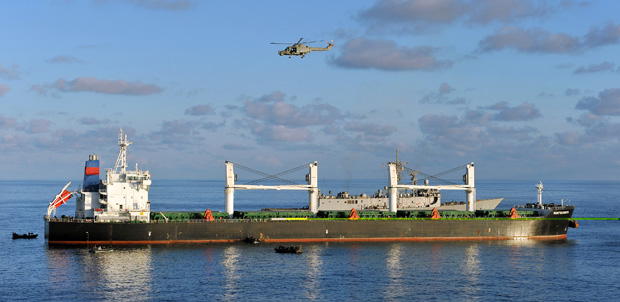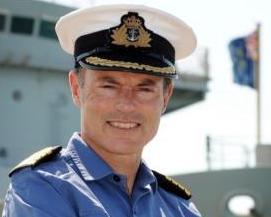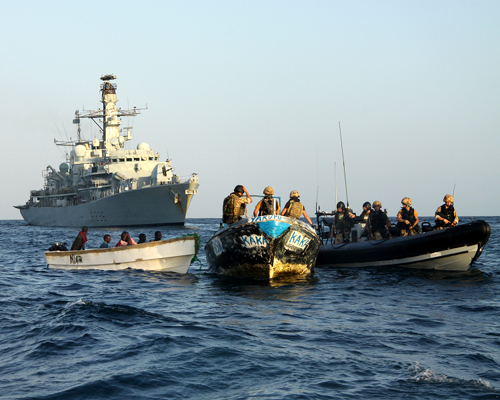Montecristo Hijack Trial
MSR’s correspondent in Italy Enzo Mangini continues to report from Rome on the first piracy trial in modern Italian judicial history.
The Montecristo Hijack Trial
By Enzo Mangini, Maritime Security Review
As the trial of the group of alleged Somali pirates involved in the hijacking of the Italian vessel Montecristo enters its final phase, the first anniversary of the event sailed away unnoticed.
On October 24th, in the bunker courtroom of the Rebibbia prison in Rome, the last witnesses summoned by public prosecutor Francesco Scavo made their statements.
The Montecristo was boarded by a dozen pirates while sailing almost 700 miles off the north-eastern coast of Somalia, on the witnesses’ bench sat the four members of the security team who were on board the vessel during the 36 hours between the 10th and the 11th October 2011.
Team leader Pietro Raimondo Marras, 26, and his men, Alessio Mascherano, 37, Carlo Di Folco, 53, and Massimiliano Sassi, 32, recalled the events that led up to the arrest of the eleven Somalis.
Their tales shed light on some aspect of the events that were to date unclear, of particular interest and importance were the details regarding the very first moments of the attack and in particular the behaviour of the pirates.
This last element is essential to defining some of the charges brought against them by Prosecutor Scavo – i.e. attempted manslaughter. Equally important is role of the mother ship where some of the defendants were arrested a week after the attack.
The attempted hijacking began around 7 a.m. when the security team first spotted an unmarked vessel on the radar and started to put BMP4 emergency procedures into place: water cannons were readied, barbed wire had already been placed along the Montecristo’s sides, and evasive manoeuvres were initiated in an attempt to foil the approaching skiff’s attempt to board the ship.
«We saw one skiff approaching us, whith five or six men on board, all of them armed with Ak-47 and RPGs – said Marras – we cleared the main deck of all personnel who were sent into the armoured citadel in the engine room, and we stayed with the captain trying to figure out what the pirates’ intentions were».
It all became clear once the skiff got closer: «At roughly 200 metres they opened fire on us with Kalashnikovs and we saw that one of them was loading one of the RPGs», Marras explained. The first rocket hit the Montecristo’s funnel but did not explode. «Had it exploded – Di Folco explained to the Court – we would have been forced to stop, because the engine would not run without the funnel».
«There was a moment when we thought they’d given up – said Di Folco – because we saw the skiff stopping. Then we realized they had run out of fuel and we saw them refuelling and then begin chasing us again».
The second phase of the attack, was much harsher. The skiff had so far attempted to approach the Montecristo on the port side while now the crew chose to try starboard: «They could get closer – recalls Di Folco – and I clearly saw them waving at us to stop the ship, which of course we did not. Then, as I was standing on the starboard wing, I saw them reloading the RPG and pointing it towards the main deck».
The men only had a few seconds to rush downstairs: «We only made the first steps and then the door of the main deck blew». The RPG had hit its target.
«It is clear that they were not firing warning shots – says Di Folco, a former captain in the Tuscania Carabinieri battalion – because they did not aim for cranes or anything else, but exactly at were they saw us».
Once in the citadel, where food and medicines had been previously been stored, the Montecristo security team members took turns in keeping an eye on the pirates from the flapped window in the funnel. They were aided by two crew members, Ukrainian sailors, one of whom had the idea of taking pictures of the pirates with his mobile telephone.
These pictures are now an important part of the evidence and each member of the security team recognized one of the defendants: Ahmed Mohammed Ali, the only white haired member of the pirate group and allegedly the leader.
From the citadel, the crew managed to get the ship going, outracing the mother ship which meanwhile had closed in on the prey and had sent another boarding party of 5 men on to the Montecristo.
«From the funnel we saw them cheering when the skiff’s crew boarded us – says Marras – but eventually we got the engine going again and the rope securing the skiff to the Montecristo’s stern broke».
The Pirates were then stranded on the Italian ship and all they could do was to try and force the citadel to take hostages that would render any rescue mission impossible or at least very difficult.
The witnesses recall that, from the citadel, they heard banging and explosions on the outer armoured door which proved impossible to open. They then heard the sound of an helicopter and a few hours later, from the funnel window they saw a US warship.
«We fired flares and flashed SoS signs with torchlight, then put out a big sign saying that the crew was well and safe into the citadel», says Di Folco. They wanted the ship to be boarded by a rescue party and this was what happened on the afternoon of 11th October when a Royal Marines team from HMS Fort Victoria boarded the Italian ship.
«We were contacted by British officers through a portable radio we had in the citadel and we were told that the Pirates had been arrested», said Di Folco. The ordeal was over.
The defending lawyers did little in terms of cross-examination, stressing that the witnesses could not be entirely sure of the identity of the people who boarded the ship.
This will probably be one of the main argument in the closing hearings that are due to start on November 7th with the first examination of the defendants. The following day the Public Prosecutor will make his closing speech and possibly also the defending lawyers Douglas Duale and Giuseppe Provenzano who’s client is Ahmed Mohammed Ali.
If everything goes as planned, and no further hearings are needed, the verdict could arrive by the end of the year if not earlier.
Photograph by Stefano Montesi
See also:
The commanding officer of the Royal Marines unit charged with the dramatic rescue mission to free two dozen sailors from the hijacked Italian ship Montecristo, has given testimony in the …
A dramatic turning point took place in the Rebibbia courtroom bunker during the third hearing of the trial against the alleged Somali pirates last week. Gerry Northwood, commander of HMS …
Otto giovani somali, gli imputati nel primo processo sulla pirateria contemporanea che si è aperto oggi a Roma. A Roma il primo processo contro presunti pirati Somali. Si è aperto oggi nell’aula …




